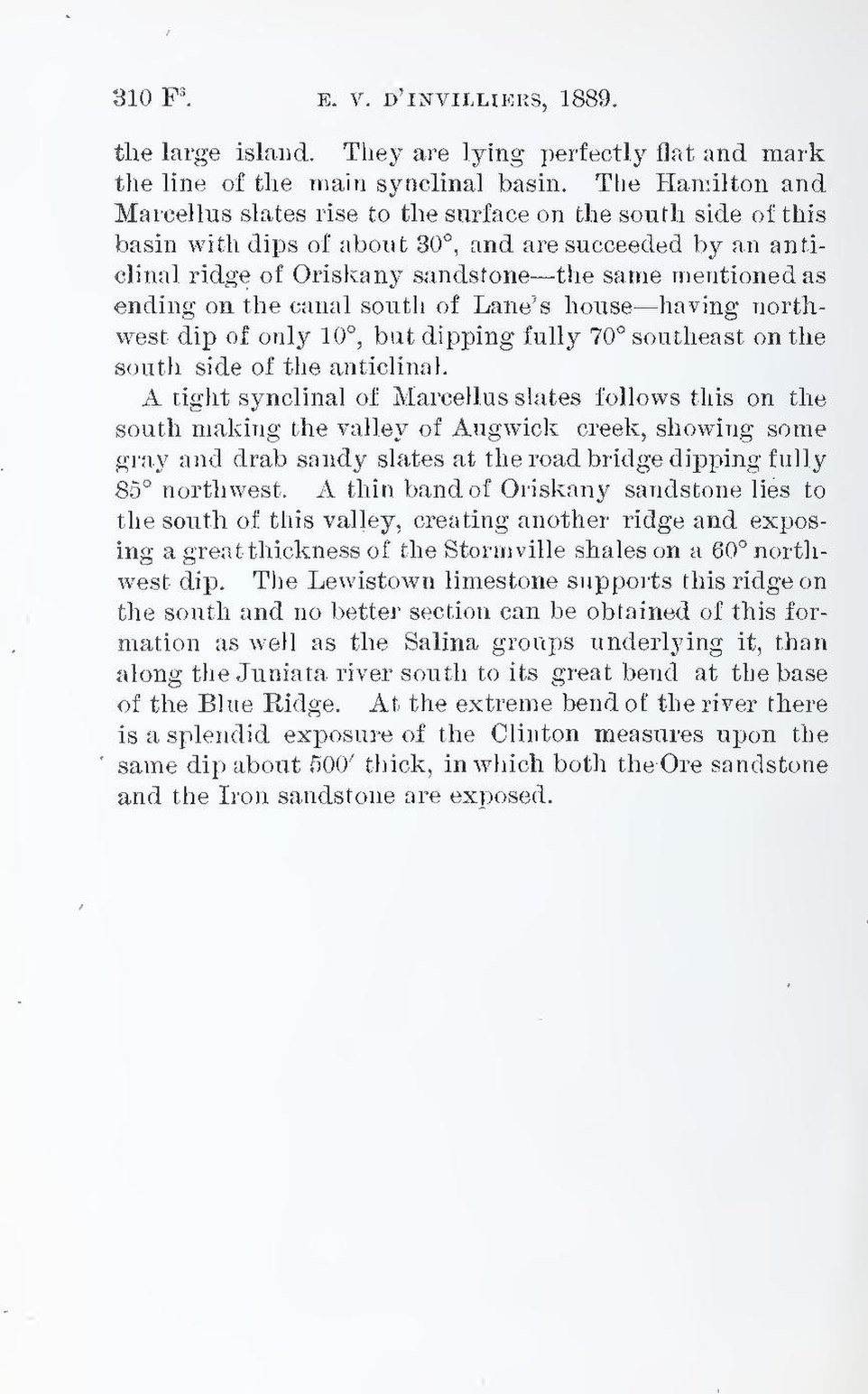the large island. They are lying perfectly flat and mark the line of the main synclinal basin. The Hamilton and Marcellus slates rise to the surface on the south side of this basin with dips of about 30°, and are succeeded by an anticlinal ridge of Oriskany sandstone—the same mentioned as ending on the canal south of Lane’s house—having northwest dip of only 10°, but dipping fully 70° southeast on the south side of the anticlinal.
A tight synclinal of Marcellus slates follows this on the south making the valley of Augwick creek, showing some gray and drab sandy slates at the road bridge dipping fully 85° northwest. A thin band of Oriskany sandstone lies to the south of this valley, creating another ridge and exposing a great thickness of the Stormville shales on a 60° northwest dip. The Lewistown limestone supports this ridge on the south and no better section can be obtained of this formation as well as the Salina groups underlying it, than along the Juniata river south to its great bend at the base of the Blue Ridge. At the extreme bend of the river there is a splendid exposure of the Clinton measures upon the same dip about 500′ thick, in which both the Ore sandstone and the Iron sandstone are exposed.
